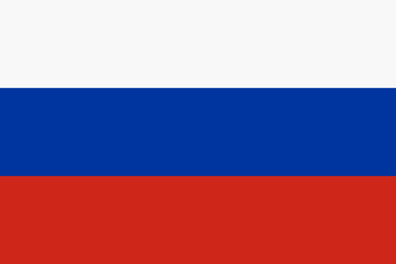Donate to Support Supercluster
Your support makes the Astronaut Database and Launch Tracker possible, and keeps all Supercluster content free.
SUPPORTSupercluster on Patreon
Your support makes the Astronaut Database and Launch Tracker possible, and keeps all Supercluster content free.
SUPPORTThis goes
to space
Luna 25
Luna 25 (Luna-Glob lander) is a lunar lander built and operated by the Russian space agency Roscosmos that will attempt to land at the Boguslavsky crater near the lunar south pole.
There are two primary science objectives: to study the composition of the polar regolith and to analyze the plasma and dust components of the lunar polar exosphere.
The lander has a four-legged base containing the landing rockets and propellant tanks, an upper compartment that holds the solar panels, communication equipment, onboard computers, and most of the science apparatus.
Dry mass is about 800 kg, and it is expected to have roughly 950 kg of propellant at launch. The lander has a 1.6 meter-long Lunar Robotic Arm (LRA, of Lunar Manipulator Complex) to remove and collect the surface regolith to depths of 25 cm. The LRA is equipped with a scoop (175 cubic cm volume) and a sample acquisition tool, a 4.7 cm long tube with an internal diameter of 1.25 cm.
The arm has four degrees of freedom/rotations: azimuthal, shoulder, elbow, and wrist/scoop. The total mass of the LRA is 5.5 kg, and it uses 30 W nominal, and 50 W maximum power.
There are six science instruments onboard
ADRON-LR is a gamma-ray and neutron spectrometer to study the surface regolith.
ARIES-L detects charged particles and neutrals in the polar exosphere.
LIS-TV-RPM, an infrared spectrometer, measures surface water and OH and is mounted on the LRA.
The LASMA-LR mass spectrometer will measure the composition of regolith samples (1 - 2 cubic cm) from the LRA using laser ablation.
The PML detector will study dust in the polar exosphere.
STS-L is a panoramic and local imaging system. Data transmission rates back to Earth are planned to be 4 Mbits/sec.
The launch will be on a Soyuz-2 Fregat into Earth orbit. It will fire the Fregat again to go into a lunar transfer orbit and from lunar orbit it will drop down to the surface. Landing will be in the region of the lunar south pole, the main landing site is at 69.545 S, 43.544 E, north of Boguslavsky crater.
The reserve landing site is at 68.773 S and 21.21 E, southwest of Manzini crater. Both coordinate points are centers of 15 x 30 km landing ellipses. The lander is expected to operate on the lunar surface, studying surface regolith and exospheric dust and particles, for one year.
Caption courtesy of NASA

On this
rocket
Soyuz 2.1b/Fregat
Meet Roscosmos’s 21st-century upgrade of the Soyuz rocket: the Soyuz 2.1b.
One of the most significant advancements in this variant is the completely digital flight control system, a major technological leap for a rocket family originally designed in the 1960s.
Specs
Height: 46.3 m (152 ft)
Diameter: 2.95 m (9 ft 8 in)
Mass: 312,000 kg (688,000 lb)
Stages: 2 or 3
The digital flight control system enhances launch precision and target accuracy, making the Soyuz 2.1b more reliable for a wide range of missions.
Additionally, this variant features an upgraded Blok-I second-stage engine, the RD-0124, which provides improved performance and efficiency over earlier models.
The Soyuz 2.1b was the second of three Soyuz 2 variants to enter service, making its debut launch on December 27, 2006.
Two Names, Two Flags
This rocket flies under two different names, depending on the launch operator:
- Soyuz 2.1b: When launching under Roscosmos from Baikonur or Plesetsk.
- Soyuz ST-B: When sold to Arianespace for European launches. This version includes European modifications, such as a European payload adapter and a European flight termination system.
Image: ESA

From this
launch site
Site 1S - Vostochny Cosmodrome, Tsiolkovsky, Amur Oblast, Russian Federation
Vostochny Cosmodrome
When the Soviet Union collapsed on December 25th, 1991, Russia inherited the Union's space program... and instantly found themselves with a problem. Their primary launch site was not in their country but in what was now the newly independent Kazakhstan.
The two countries entered into a mutually beneficial agreement for Russia to lease the Baikonur Cosmodrome, with a current annual payment of $115 million (USD).
To reduce their reliance on a foreign country’s launch facilities, Russia committed to building a new cosmodrome, this time in the Russian Far East.
Vostochny, which means “eastern” in Russian, is a primarily commercial launch center, though military missions can take place from the site.
Proposals call for the cosmodrome to eventually host 44% of all Russian launches, including human missions.
Numerous delays with construction and corruption have delayed the spaceport’s high flight level use. Of the originally planned seven (two for crew) launch pads, only one has been built for Soyuz 2, a second is under construction for the Angara rocket, and no crew launch pads have been started.
The one completed pad is Site 1S, “S” standing for Soyuz, which conducted its first launch in April 2016.
Image: A Soyuz rocket on Site 1S. Credit: Kremlin

GET THE SUPERCLUSTER APP
THE SUPERCLUSTER PODCAST
A podcast exploring the amazing milestones that changed space history, the wildest ideas that drive our future, and every development in this new Golden Age of Space.
Donate to support
Your support makes the Astronaut Database and Launch Tracker possible, and keeps all Supercluster content free.
SupportCOPYRIGHT 2021 SUPERCLUSTER LLC

